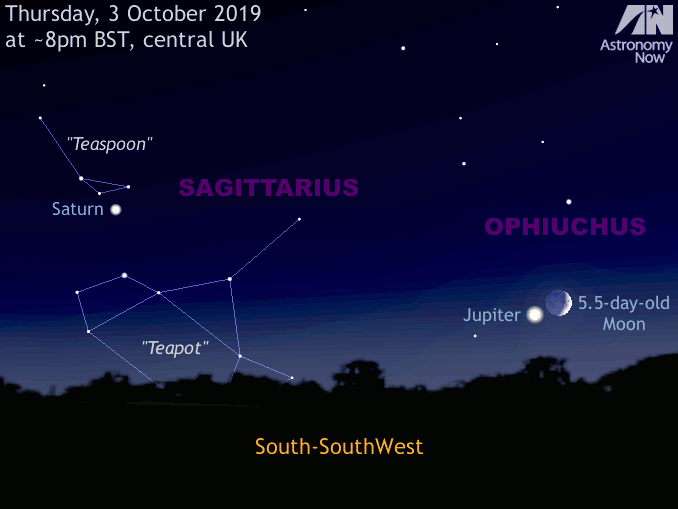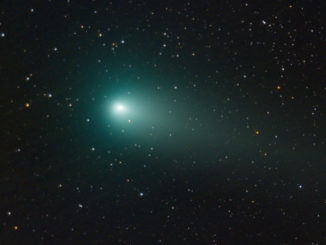
Fortunately, the waxing crescent Moon of the current lunation acts as a very convenient celestial guide to identifying Jupiter and Saturn with the naked eye in the first week of this month. As viewed from the heart of the British Isles, the 5½-day-old Moon lies just 1½ degrees to the upper right of magnitude -2.0 Jupiter at 8pm BST on Thursday, 3 October. Then, 48 hours later, the first quarter Moon lies 1½ degrees to the lower right of magnitude +0.5 Saturn. Hence at 8pm BST on the nights of 3 and 5 October, small telescopes and binoculars magnifying less than 30× permit views of Jupiter and Saturn within the same field of view as the Moon.
If you are fortunate to have clear skies for both of these conjunctions, contemplate that Jupiter and Saturn are currently situated 830 million and 1,490 million kilometres, respectively, from Earth. Put another way, Jupiter and Saturn presently lie 2,178 and 3,800 times farther away than the lunar crescent that appears closely in their same line of sight on the nights in question.
The Moon hides the ringed planet
The first quarter Moon merely passes close by Saturn on 5 October as seen from Western Europe, but elsewhere in the world the view is rather more interesting. As seen from Chile and Argentina, for example, the Moon actually passes in front of (or, occults, to use the correct terminology) the ringed planet, but in daylight. However, as seen from Africa – specifically Angola, most of Zambia, Namibia, Botswana, Zimbabwe and South Africa – the lunar occultation of Saturn is visible in a dark sky before moonset in the west.



